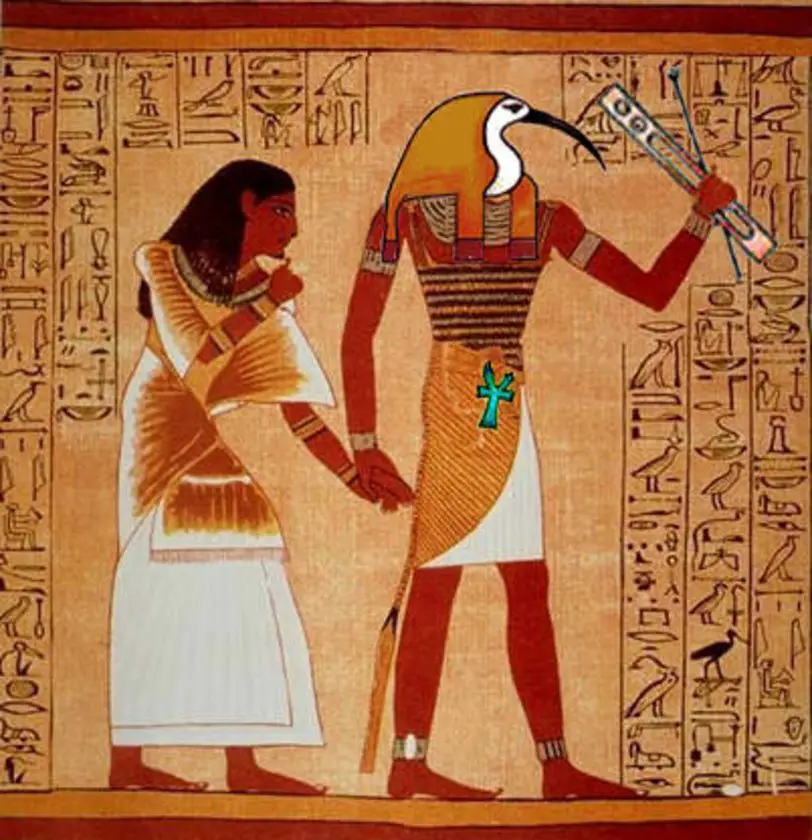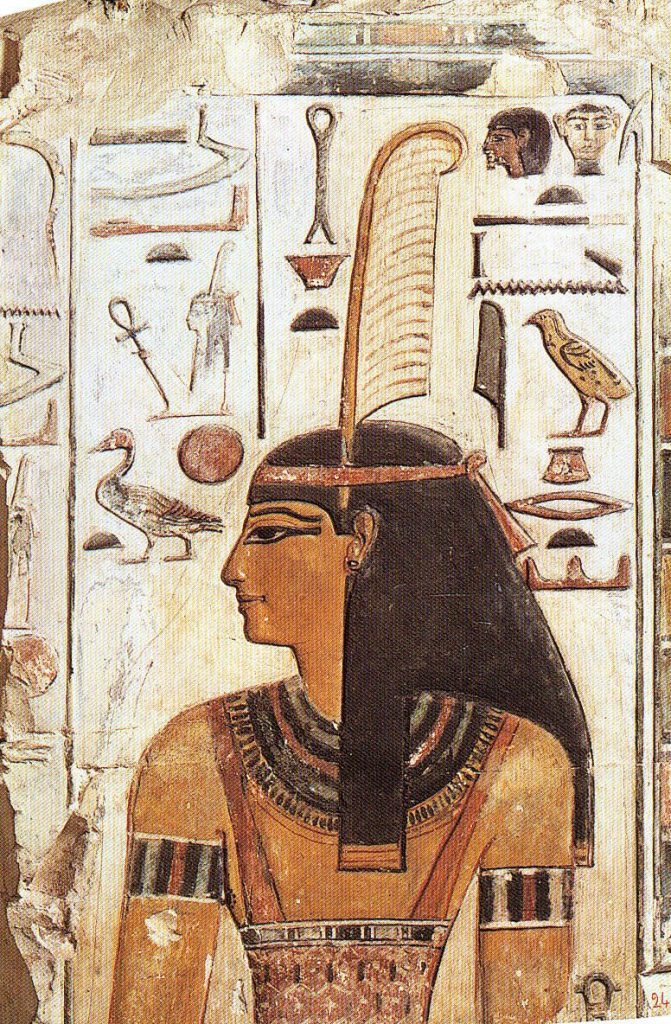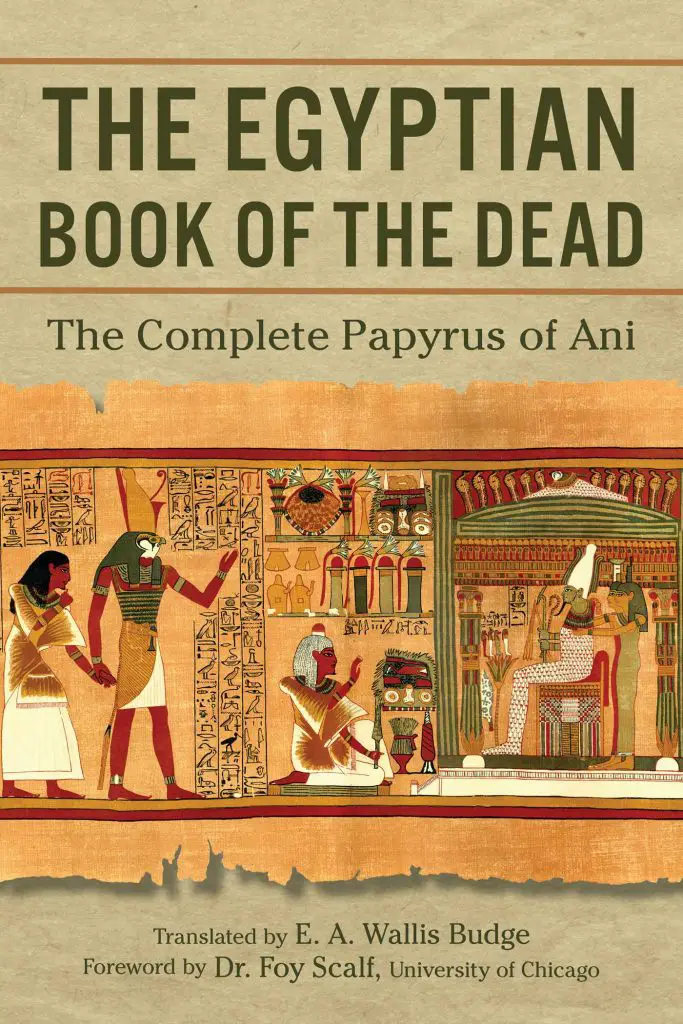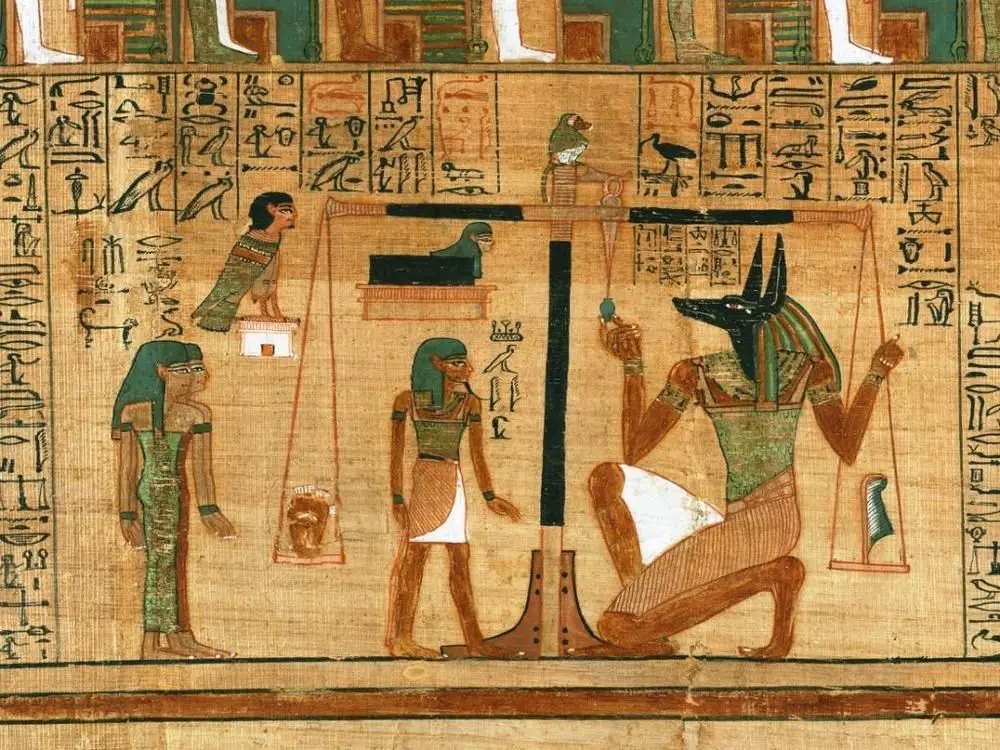The ancient Egyptian religion consisted of the female goddess of truth, justice, balance and morality who was known as Maat (Ma’at) or Mayet.
Maat was the daughter of the Egyptian sun deity Ra and wife of the moon god Thoth. She imparted a spirit of justice to the Egyptians. By weighing people’s souls against her feather of truth, she was responsible for judging whether they would successfully reach the afterlife. Maat further represented the stability of the universe and was the personification of the cosmic order. The records and writings of this female figure where she is mentioned date back to the Old Kingdom of Egypt more than 2,300 years ago.

The equation of maintaining Order of Heaven and Earth:
The Egyptian culture believed that every element, including religion, society, seasonal changes, has its due place in the world. The society was based on order. The goddesses Ma’at came to represent the concept of balance and order since many Egyptians felt the need of explaining the world around them, how they conceive it to be. According to Egyptian legend, Maat kept the stars in motion, led the seasons to change, thus maintaining the order of Heaven and Earth.

The force opposing this harmonious balance was known in ancient terms as “isfet” or chaos. The desert beyond the Nile River was considered to be chaotic by the ancient Egyptians, whereas, the area situated closer to the Nile was considered orderly. These two forces were held important to bring balance to the world in which they lived and were an essential part of everyday Egyptian life.
Representations of Ma’at:
Ma’at is usually portrayed in the form of a feminine figure seated or standing with outstretched wings attached to both her arms. Elaborate descriptions of her include holding a sceptre in one hand and an ankh (the symbol of life) in the other.

Her statue was a stone platform that represented a stable foundation on which order was constructed. The symbol of an ostrich feather is commonly attached to her which often forms a distinctive of her headdress.

Some less known images of the goddess portray her without a head, placing a feather instead. The feather in other images alone conveys her presence. The feather, along with conveying her presence, has become a symbol of balance and order, becoming a hieroglyph for “truth.”
Maat as a an embodiment of Justice:
In ancient Egypt, Ma’at was associated with the arenas of law. From the 5th dynasty (c. 2510-2370 BC) onwards, the Vizier responsible for justice was known as the Priest of Maat and in later periods, judges wore images of this feminine representation of justice, Maat.
The ‘Spirit of Maat’ was embodied by the chief judge who was in charge of the Egyptian law courts. He had a dual responsibility, working directly in the law courts and justice system and also serving as a priest.

The feather of Maat was worn by the “Priest of Ma’at” who attended the court hearings while all other court officials wore small golden images of the goddess as a sign of their judicial authority which would be characterized by being balanced and fair. The Priests further drew the symbol of feather on their tongues with green dye, to indicate that the words they spoke were the truth. The priest would give his verdict and deliver the earthly punishment according to the nature of the law that had been broken.
If a person was engaged in jealousy, dishonesty, gluttony, laziness, injustice, and ungratefulness, it was considered a crime against the eternal balance of the Earth or against Maat. Punishments included corporal punishments, imposing fines and in extreme situations, capital punishments.
The Egyptian found guilty was deemed to have violated the Spirit of Maat and would further face a judgment in the Underworld which was crowned as the ceremony of justification in the Hall of the Two Truths. The “Maat Literature” referred to the ‘Spirit of Ma’at’ provided details in the wisdom literature and further contained practical guidance with examples and some rules applied in previous law cases.
The Book of the Dead:
The Book of the Dead from ancient Egypt was a collection of funerary texts and spells which was designed to assist a person’s journey into the afterlife, through the curtains of the Underworld. The book consists of a spell known as the “Forty-Two Declarations of Purity” or the “Negative Confessions”. This spell embodies the confessions of the deceased which he/she has committed throughout their life. It was a practise which held that if any crimes committed against Ma’at should be written down as they could easily be forgiven.

Maat played an important role in the Hall of Ma’at where the judgment of the dead was performed. The ceremony was termed as “Judgment of Osiris,” named after Osiris, the god of the dead.
When the deceased was judged, their hearts were weighed against the feather of Ma’at. If a balanced scale was struck, the deceased was entitled to meet Osiris in Paradise. The weightlessness of their hearts depicted that their souls were not burdened with sin and evil. If the heart was found to be heavier than the feather, it would be devoured by Ammit, the soul-eating monster. Other gods present in the judgement hall who were part of the ceremony were also pictured holding a feather but the scales always represented Ma ́at.

Ancient Egyptians paid reverence to many gods, one was certainly Ma’at. However, Egyptians archaeologists have often argued that Maat was more of a concept or an ideal. It is rational to assume that since she guided the Egyptians in being better individuals, she could be compared to the conscience of a person.
Hatshepsut, the fifth pharaoh of the Eighteenth dynasty of Egypt, Egypt’s first female pharaoh, dedicated a small temple to Maat, at the Karnak temple complex in Luxor, Egypt. Though a major part of the erection has come down over time, it still preserves inscriptions of some of the viziers of Ramesses III and XI. Another temple of Maat is situated inside the Precinct of Montu, the smallest of three enclosures at Ipet-Isut. It was indicated by reliefs and stelae belonging to the reign of Amenhotep III.
Read also: Saint Bavo’s Cathedral in Belgium: Revelation of Walls of Human Bones
